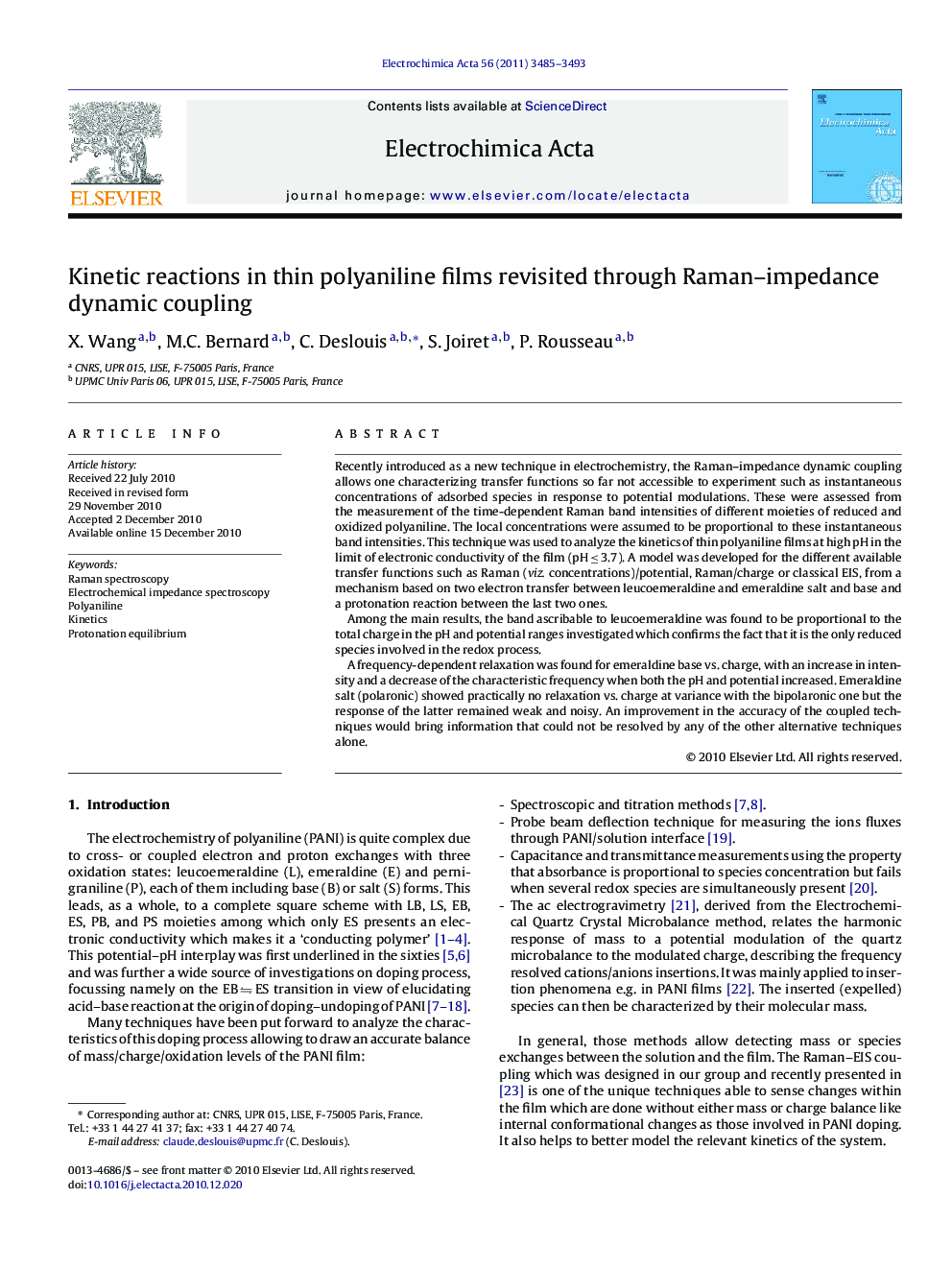| Article ID | Journal | Published Year | Pages | File Type |
|---|---|---|---|---|
| 190163 | Electrochimica Acta | 2011 | 9 Pages |
Recently introduced as a new technique in electrochemistry, the Raman–impedance dynamic coupling allows one characterizing transfer functions so far not accessible to experiment such as instantaneous concentrations of adsorbed species in response to potential modulations. These were assessed from the measurement of the time-dependent Raman band intensities of different moieties of reduced and oxidized polyaniline. The local concentrations were assumed to be proportional to these instantaneous band intensities. This technique was used to analyze the kinetics of thin polyaniline films at high pH in the limit of electronic conductivity of the film (pH ≤ 3.7). A model was developed for the different available transfer functions such as Raman (viz. concentrations)/potential, Raman/charge or classical EIS, from a mechanism based on two electron transfer between leucoemeraldine and emeraldine salt and base and a protonation reaction between the last two ones.Among the main results, the band ascribable to leucoemeraldine was found to be proportional to the total charge in the pH and potential ranges investigated which confirms the fact that it is the only reduced species involved in the redox process.A frequency-dependent relaxation was found for emeraldine base vs. charge, with an increase in intensity and a decrease of the characteristic frequency when both the pH and potential increased. Emeraldine salt (polaronic) showed practically no relaxation vs. charge at variance with the bipolaronic one but the response of the latter remained weak and noisy. An improvement in the accuracy of the coupled techniques would bring information that could not be resolved by any of the other alternative techniques alone.
